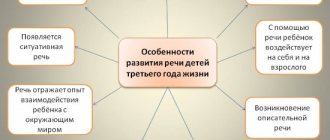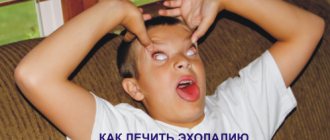Have you ever encountered the following situation? We check the child’s writing notebooks and notice a huge number of errors. This is not necessarily a sign of laziness or illiteracy, because there is such a disorder of written speech and mental functions of the brain as dysgraphia in children
The concept of dysgraphia as a disorder of written speech
What is dysgraphia?
In one of the previous articles we discussed the topic of dyslexia. It was also said there that these are similar developmental disorders, and they almost always overlap, but do not always accompany each other. In Russia, while receiving primary education, more than thirty percent of primary school students have this deviation, so the disorder is common and it is very important to learn to recognize it, understand its causes and know ways to overcome such a problem.
Dysgraphia is a written language disorder in which obvious errors are made when writing and which requires speech therapy correction.
Like dyslexia, dysgraphia has several forms, each of which has its own characteristics, and, more precisely, its own examples of errors made by children. The following forms of dysgraphia can be distinguished:
- Acoustic
- Articulatory-acoustic
- Optical
- Ungrammatical
- Dysgraphia associated with non-perception of language analysis and synthesis
How to help a child suffering from dyslexia?
Of course, dyslexia requires increased attention not only from specialists, but also from parents. Help your child.
Before you start your homework on correcting the now fashionable disease, remember some rules.
- Calmness and patience. Even when your nerves are at their limit. Remember that dyslexia is not a sign of laziness, it is truly a disorder, a health problem.
- You cannot punish a sluggishly reading child for mistakes when reading.
- Praise. Highlight achievements. The situation of success is inspiring.
- Do not share your feelings about this with other people in front of your child, this can seriously hurt him.
- Dyslexia can manifest itself in different ways. Let's not go deeper, there are specialists for this.
When starting classes, remember that they should not be done occasionally, but regularly. To prevent your baby from getting bored with daily exercises, try to organize them in a fun way and do not overload the growing body.
Symptoms of dysgraphia in a child
Phonemic perception
This form of written language impairment involves the presence of poor phonemic awareness. When practicing writing, one replaces some with other letters that denote similar sounds. For example, replacing paired consonants “b” / “p”, “d” / “t”, “g” / “k”, consonant vowels “o” / “u”, “e” / “yu” or complex sounds and their components “a” / “i”, “ts” / “s”, “ts” / “t”, “h” / “shch” and so on.
In case of acoustic dysgraphia there are no problems with hearing and oral speech
.
Errors in pronunciation of sounds
In this case, the symptoms described above remain, only errors in the pronunciation of sounds are added to acoustic dysgraphia. In fact, this is a combination of acoustic and phonemic dyslexia. The child reads and writes words incorrectly and confuses similar sounds.
Articulatory-acoustic and articulatory disorders occur in children with phonetic-phonemic speech disorders.
Agrammatic speech disorder
There are difficulties in pronouncing text that has been read and is due to unformed speech. The student writes and pronounces without fully realizing syllabic perception and the meaning of the formation of words. It is difficult for him to find synonyms or antonyms, to describe something correctly, or to form the necessary form of a word (for example, a diminutive or plural). There may also be difficulties in constructing complex sentences (for example, he omits one or another member of a grammatical sentence or violates the rules of their sequence). Agrammatic dysgraphia is often found in bilingual families.
Optical dysgraphia of writing
In this case, the child's brain confuses visually similar letters. He can add or remove elements of letters, as a result of the formation of words, both existing and non-existent signs are obtained. For example, you can confuse “X” and “F”, “A” and “L”, and from the letter “E” you can make “S” in reverse. Also, sometimes with optical dysgraphia, letters are mirrored.
Underdevelopment of language analysis and synthesis
Despite the complex name, this type of dysgraphia is quite simple to identify. A student suffering from it, in the process of writing, misses letters or syllables, changes their places, duplicates or even adds something that is not there. Also, a student may confuse in written work where a space is needed and where not, or not complete words. There are also difficulties in defining the boundaries of the proposal.
Norms for the formation of the syllable structure of a word at different ages
- Children from 0 to 3 years old. Repeating simple syllables “ma-ma”, “ba-ba”, etc.;
- Children from 3 to 4 years old. Reproduction of words of one, two and three syllables (“mint”, “house”, “car”);
- Children from 4 to 5 years old. Reproduction of words with open syllables without a cluster of consonants (“valley”, “mitten”), words of four to five syllables and with a cluster of consonants (“tail”, “bridge”, “builder”, “crumb”, “reed” );
- Children from 5 years old. Repeating sentences with complex words (of 3-4 syllables with a combination of consonants) after adults (“a builder was working on the construction of a building”, “a hairdresser is cutting hair with scissors”, “a leak was discovered in a water pipe”).
A school-age child should be able to complete a task orally and in writing, for example, write out complex words from a sentence (of 3-4 letters with a combination of consonants), read a tongue twister, and so on.
Causes of impairment of writing and speech reproduction of information
Why does a child write poorly or why does a child read poorly? Not surprisingly, the causes of dysgraphia are similar to the causes of dyslexia.
- Hereditary predisposition
- Diseases suffered during the perinatal period of development, as well as various complicating factors (bad habits of the mother, complicated toxicosis, asphyxia, short interval between the mother’s pregnancies, and so on)
- Internal functional reasons (long-term somatic diseases, etc.)
- External functional reasons (improper speech education)
- Lack of school readiness for writing
- Minimal brain dysfunction
- Impaired mental function
- Attention Deficit Hyperactivity Disorder
- General speech underdevelopment
- Impaired pronunciation of speech (dysarthria)
- Strokes, traumatic brain injuries, neurosurgery and brain tumors (possibly in adulthood)
Dysgraphia, like dyslexia, can lead to many problems. Among them are a drop in educational motivation, underdevelopment of speech, school failure, undeservedly poor performance, and so on. Therefore, it is very important to realize that it is not the child’s fault that he writes incorrectly, and this problem is not related to his schooling.
Responsibility for correcting the violation lies, of course, with specialists, but first of all, with parents!
As well as the process of development of their pet as a whole. All that is required of teachers is to recognize the violation in time and provide conditions in the classroom that promote the harmonious development of children, including the correction of dysgraphia.
But is it possible to confuse dysgraphia and other developmental disorders?
How not to do this?
Diagnosis of dysgraphia disorder by a speech therapist
Unfortunately, you will not be able to make a diagnosis and therefore contact a medical center. It is necessary to carry out a process of speech analysis of written grammar. You will have to undergo diagnostics and examination by a number of specialists, among them: a neurologist, an ophthalmologist, an otolaryngologist, a speech therapist and a psychoneurologist (the latter, in fact, make the final diagnosis). Each of the doctors checks whether the subject has any health problems that could lead to a disruption in the writing process, in addition to dysgraphia. Let's assume that the diagnosis has already been made. The main question that faces us now is how to deal with dysgraphia in a child?
Work on dysgraphia correction with a speech therapist
Any doctor will tell you that self-medication is unacceptable, and this is true.
Basically, a speech therapist works with dysgraphia, but a neuropsychologist, a psychotherapist, and an educational psychologist can also work.
You should prepare for the fact that the process of eliminating speech and writing disorders will not be quick. The correction program is built depending on the causes, type of violation and age characteristics. The older he is, the more difficult it is to carry out the correction.
Inattention or a real problem?
Before you panic, you need to accurately determine whether this is due to inattention caused by the child’s painful condition, overwork, or a real problem. To do this, you need to observe the child as he reads and writes. If, when reading, he sometimes forgets letters, and when writing, he confuses similar signs, because he has just begun to study these letters or remembers them after a summer vacation, there is no reason to worry.
Another case is if a child cannot read a word because he constantly forgets the letters, and also does not remember how and in which direction to write them. If such errors are persistent, then this may be signs of dyslexia (problems with reading) or dysgraphia (difficulty in writing).
Dyslexia is a common problem, the main characteristic of which is an incomplete reading disorder - the child reads, but constantly makes the same mistakes. He can skip letters, syllables or entire words, add new characters to words, and confuse them in places. Often children simply do not distinguish between certain sounds, cannot reproduce them and use them not only in oral speech, but also in writing or reading. Very often, a child has not only dyslexia, but also dysgraphia.
Dysgraphia is a persistent impairment in children's ability to write. If a child confuses and swaps syllables and letters when writing, this may cause illiteracy in the future. Very often, such children have illegible handwriting due to constant doubts about the spelling of specific letters, syllables or words. They may not write capital letters or use punctuation at the end of sentences.
Children with dysgraphia in high school try to write in small phrases, using a minimum number of words, but still make mistakes. Classes in which they need to write become painful for them, so they often skip them. They begin to feel a sense of inferiority, which further leads to the development of complexes and aggression. In advanced cases, over time, teenagers become outcasts in the team.
As you can see, confusing letters when reading and writing can lead to quite serious consequences. Therefore, it is extremely important to notice the problem in time and take action. The sooner parents turn to a speech therapist for help, the faster and easier the correction will be for the child. He will catch up with his peers and will be able to master the school curriculum normally.
Cases when medication or physiotherapeutic treatment is necessary
If there is an organic cause of dysgraphia, then its treatment will be prescribed (medication, physiotherapy, and so on). Similar methods of treatment are prescribed for aggravated disorganization of written speech, leading to the impossibility of writing (Agraphia). Various exercises will be carried out with a speech therapist. You can apply some of them yourself and work with your child at home, in this way you will not only help with the correction, but also get closer to your baby.
How is phonemic hearing formed?
With normal development, reactions to sounds are already observed in the newborn. This is expressed in shuddering, blinking, and changes in breathing. Soon the sounds begin to cause the child to delay some movements and stop screaming. Already at 3-4 months, the child begins to distinguish between speech and non-speech sounds, as well as homogeneous sounds of different volumes. In the first six months of life, the main auditory load is carried by intonation; the baby learns to distinguish the voices of close people. By the age of 1 year, the child begins to respond correctly to sounds pronounced by an adult, for example, when pronouncing the word “clock”, the child turns his head towards them, as well as when pronouncing the sounds “tick-tock”. The child responds to the word, and not to intonation, and this is how the stage of pre-phonemic development ends. In the second year of life, the child begins to distinguish all speech sounds.
Exercises to correct dysgraphia at home
Is it possible to correct and how to correct dysgraphia at home? Yes, after consultation with a speech therapist and his analysis of the situation, the main burden falls on doing the exercises at home. Below are exercises for correction. You can apply them and practice them yourself. This way you will not only help the correction, but also get closer to your baby.
"Labyrinth"
You need to go through the labyrinth by drawing a continuous line on a piece of paper without lifting your hand or turning the labyrinth.
Graphic dictations
These are tasks in which you need to draw something on a checkered sheet of paper based on prompts. There are graphic dictations in which a letter or number must be obtained.
Construction of signs from elements
You can make letters and numbers from different objects: counting sticks, pencils, cereals, plasticine, and so on. You can draw drawings on paper in the form of signs. From already composed symbols, you can recompose them. Take them apart and put them back together.
Schulte tables
Schulte tables, the Munstenberg technique and other psychological methods for developing attention related to numbers. According to psychologists, this is especially effective when the child is between 10 and 11 years old.
Crosswords
Scanwords, crosswords, English crosswords, Sudoku and other puzzles.
Recognizing incomplete notations
Play recognizing letters and numbers that are not fully drawn. Let the child add the part of the sign that is missing. Some designs can be continued into several different symbols. For example, the letter “B” and the number “5” have a common part.
Finding missing letters in a word
Write a word and deliberately leave out a letter or even a syllable. Let the student analyze the word, find gaps, highlight the syllable, correct the mistake and name the correct spelling.
Memorizing poems
This is also a kind of exercise that develops memory and speech. In our case, poetry will help us gain a sense of rhythm in speech.
Play with words
Make anagrams: rearrange letters and syllables in words so that they form new words or phrases. You can also take some medium or large word and try to make words from the letters in it. There are a lot of similar techniques.
Development of fine motor skills
It seems that everyone around is already repeating this: the development of speech is associated with fine motor skills. Make the most of this opportunity: let the child’s psyche take a break from the Russian language, and let him take up modeling, beads, construction sets, origami and other interesting activities. Turn on your imagination - and you will succeed. In addition, it will be extremely interesting for both you and the child!
Psychological comfort when writing
You must provide your pupil, first of all, with psychological comfort, because without it the problem will either not be solved, or will be solved, but with consequences of a different nature. Fear of the teacher, hatred of writing and lessons, shame in front of classmates and more.
- Talk to teachers. Explain the seriousness of the situation and ask them to behave competently. Let them not focus the attention of other children on the problem and be patient. The teacher's duty is to treat his student with understanding. This means helping, stopping the ridicule of others and not scolding for mistakes. A teacher who does not understand this can not only interfere with the correction of dysgraphia, but also lead the student to nervous overstrain. Just imagine the situation. You are a small child of 8 years old who cannot do what all girls and boys do with ease. At the same time, an adult, a teacher with whom you often have contact, scolds you for writing mistakes, and meanwhile your peers ridicule them. And this continues for quite a long time, day after day. I think it is obvious that the little person will have neither educational motivation, nor trust in others, nor healthy self-esteem.
- Charge your child only with positive energy. Praise your child for successes more often and do not talk about bad things. It is very important that he believes in himself and does not give up, that is, does not stop doing writing exercises just because he is tired or something does not work out. At the same time, do not force him to overwork: everything should be in moderation. Otherwise, breakdowns cannot be avoided. Remember that parents are the most important thing your son or daughter has. They are his best friends and the closest people in his life. Who, if not you, will support your child in achieving success?
Reading impairment: exercises to correct dyslexia
We offer you tasks that will benefit all children with dyslexia. The exercises are aimed at developing visual attention, perception and memory, enriching vocabulary and improving reading skills.
Making a word from initial letters
Place pictures in front of your child, the initial letters of which together form a word. You can use toys or any other items. Try offering the opposite option: the baby will “bewitch” the word in the same way, and you will read it.
The words are lost
“There are words hidden in the room that begin with the sound R. Let’s look for them.” Next, complicate the task and ask them to find objects that end with a certain sound.
Letter from memory
The child must read the word and remember it, and then write it. Happened? We complicate the task and offer a phrase and a sentence.
Fix the word
Invite your child to make a word from a set of syllables. At the very beginning of learning, if difficulties arise, show a hint picture.
Velcro words
“The words are stuck to each other. They need to be helped to separate.”
MOMDAPAGRANDMOTHERGRANDFATHERWORDPICTURE
Subsequently, complicate the task and offer to divide the sentence into words.
I'M GOING FOR A WALK. I BOUGHT A BEAUTIFUL DOLL. ITS NATASHA.
Word game
We all played "city games". The principle of playing with a child is similar, only define the theme more simply. Or even without it at all. Just come up with a chain of words together that end with the last sound of the previous one. For example: mother - album - chalk - moon - aquarium.
Find the word
Print rows of letters on a piece of paper, among which the child must find a certain word. For example, "sausage". To begin with, you can make the task easier and place a card with the lost word in front of your student.
Culinary ABC
While you are preparing lunch, give your child the task of laying out “pasta” diagrams - the number of pasta should correspond to the number of sounds in the word. It’s great if you come up with your own personalized sound designation system together. For example, pasta represents vowels, beans represent hard consonants, and peas represent soft consonants. The result is an unusual “food” pictogram.
We write, we sculpt, we cut out
If a first-grader mixes visually similar letters when reading, you can use the exercises that are suggested for eliminating dysgraphia (writing impairment). We wrote about this in the article Dysgraphia: a buzzword or a terrible diagnosis?
Together with your child, look for objects that resemble naughty letters, write them on semolina, on foggy glass, lay them out, compare the graphemes and try to find pronounced differences. Sculpt, cut, burn on a board, lay out from beads. There are many options, if you wish.
Find out the letter from the description
"Attention! The letter disappeared, special signs - two long, even sticks, with a short one in the middle between them. An urgent search is being announced." Let your child try to tell you a riddle and describe the letter in his own words.
Letter on the back
The baby will not only improve his reading, but will also receive a nice relaxing massage when his mother draws letters, syllables and words on his back.
Find the letter
Offer your child shaded letters and objects superimposed on each other, upside down. An interesting option: add an element to a letter to create another grapheme.
Complete the letter
The essence of the task is clear from the title. Make your own cards with unfinished letters, skip individual elements. The child’s task is to restore the defective grapheme. The exercise is aimed at developing visual attention and imagination, as well as differentiating mixed letters.
The vocabulary of dyslexics is often limited, so an important part of the lessons is to work on enriching the vocabulary and developing the skill of inflection.
To make it clearer, let's look at several game options.
Call me kindly
Chair - chair, table - table, tree - tree, etc.
Whose tail?
“A cat’s is cat-like, but a dog’s? What about the wolf?
Professions
“Who raises the children? Who sews the clothes? (teacher, seamstress).”
Naughty words
“The words were playing around and became out of place. I wonder what was written. Let’s fix the proposal.” You can use pictures to help.
Don’t forget to buy your child children’s magazines with crosswords, anagrams and other “developmental” games.
What is important to know about dysgraphia
- Dysgraphia is the most likely consequence of dyslexia. Since the child first reads and then writes, the difficulties that manifest themselves in reading are transferred to problems in writing. He first reads incorrectly and then writes incorrectly.
- Pathologies can also occur in adults. If corrective work is not carried out on time, then these speech and writing disorders can remain with the person for life. Accordingly, they will cause him more problems.
- Sometimes correction of dysgraphia is a long process. Parents need to be prepared for the fact that sometimes correction of dysgraphia, dyslexia and other related speech disorders may take more than one month or even one year, but several years. Willpower and patience will be required.
- If you have questions about how to treat dysgraphia, then dysgraphia is not a disease. And not even a mental disorder. This is only a disorder of speech development associated with the functioning of the brain. Therefore, it would be incorrect in this case to use the words “treatment”, “sick”, “disease” and others. However, it is also inappropriate to assume that this will “go away on its own.”
- Dysgraphic handwriting may be unclear. This is often associated with a violation of the motor and visual analyzers, so a child suffering from this may write illegibly and crookedly.
Risk groups for dysgraphia
There are certain risk groups for children who may develop dysgraphia.
Therefore, doctors must first diagnose and analyze the child’s sound pronunciation in the following cases:
- If he comes from a multilingual family;
- Previously had diseases of the hearing and speech apparatus;
- Left-handed or ambidextrous (a person for whom the left and right hands are equivalent);
- He started talking late;
- Left-handed, who was retrained to be right-handed;
- With disorders of phonetic perception;
- Has memory or attention problems;
- A student with a low level of school readiness;
- He writes as he speaks;
- Makes a small number of mistakes typical of dysgraphics.
Child's interest in writing
Games will help to interest the child. This is especially true if preschool children have dysgraphia.
If a child does not want to correct the violation and neglects written work, then exciting games will come to the rescue.
With your support, correction of dysgraphia will turn from backbreaking work into leisure.
Development of mental functions
The development of mental functions will help correct speech disorders at the initial stage. Activities for the development of fine and gross motor skills, attention, memory, thinking, intelligence, phonemic hearing, musical hearing, spatial perception, emotional-volitional qualities and other things - this is something that will be of great benefit in preventing difficulties with speech and the occurrence of distortions in recognizing the structure of the environment peace. In addition, developing a child’s psyche in itself is always useful and at any age (even when he is no longer a child).
Statistics on dysgraphia
The statistics on dysgraphia are astounding. According to research, approximately half of 2nd grade students have dysgraphia.
In a regular school this figure is almost forty percent.
This is due to the fact that about half of first-graders have phonetic-phonemic speech underdevelopment (FFS) or general speech underdevelopment (GSD), which prevents the child from becoming literate.
Compensation
Dysgraphia is not a death sentence
Of course, the violation is usually corrected. But it is also worth noting that some people highlight a peculiar advantage of dysgraphia. The fact is that the human brain has compensatory capabilities. This means that he can compensate for any gaps with something else. That is, if any ability of the brain is impaired, then another may be even too well developed. This fact and certain “statistics” may be the basis for the myth that dysgraphia is a “disease of geniuses.”
Indeed, we can observe that many geniuses suffered from this deviation.
Among them are Albert Einstein, Hans Christian Andersen, Thomas Alva Edison, Michael Faraday, Agatha Christie, Walt Disney, John F. Kennedy, Vladimir Mayakovsky, Steve Jobs and many others.
What to pay special attention to!!!
- If your child is left-handed.
- If he is a retrained right-hander.
- If your child attended a speech therapy group.
- If the family speaks two or more languages.
- If your child went to school too early (unreasonably earlier learning to read and write sometimes provokes the occurrence of dysgraphia and dyslexia). This happens in cases where the child has not yet reached psychological readiness for such training.
- If your child has problems with memory and attention.
Teacher - speech therapist of the State Budgetary Institution "PPC" Svetlana Vasilievna Zotova








